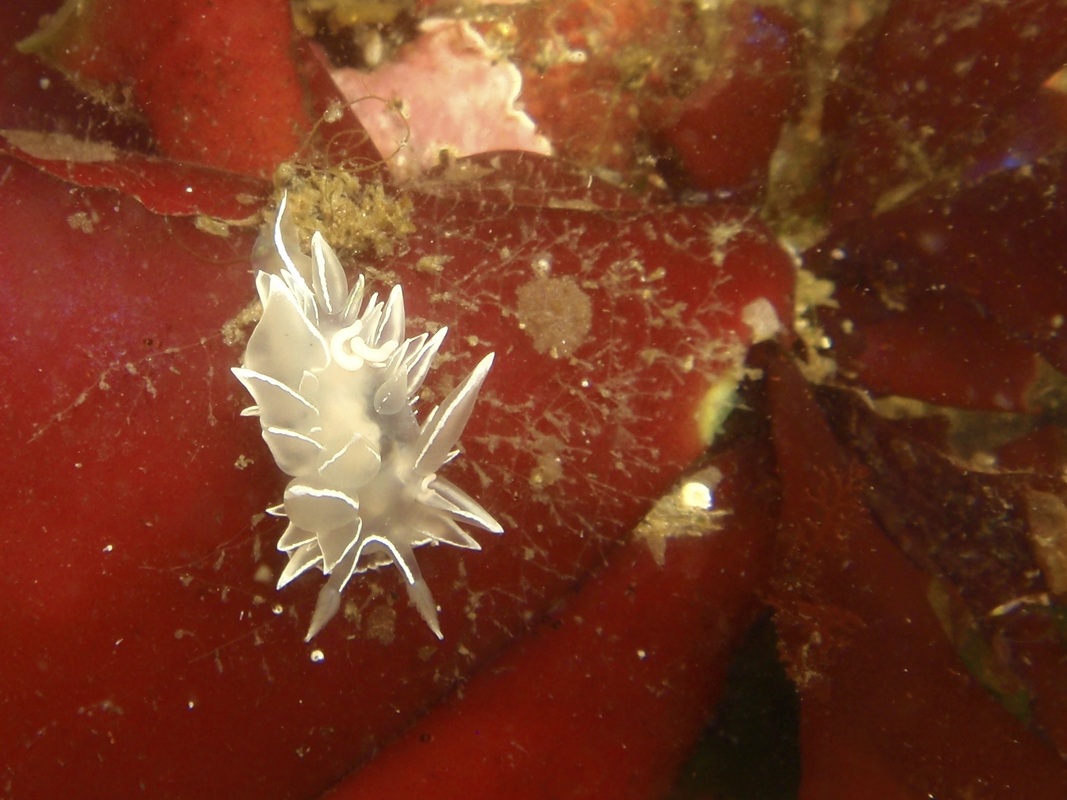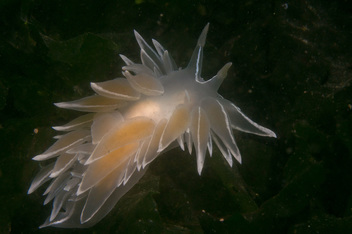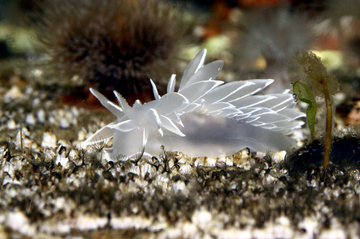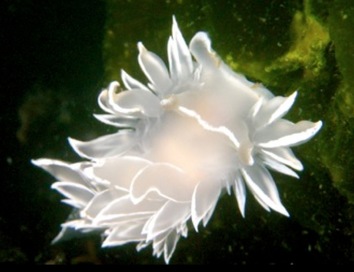White-lined dirona, frosted nudibranch, alabaster nudibranch, chalk-lined dirona • Dirona albolineata
Identification
The white-lined dirona is a translucent dorid nudibranch that, while often a clean white, can vary in colour from cream or greyish-white to salmon pink or purple. Distinctive bright white lines edge the flattened cerata that project from its dorsal side. These lines, along with lines that runs up and between the rhinophores, along the frontal veil, and along the tail end of the foot, appear to glow and make this nudibranch an attractive subject for underwater photography. This species gets to 17.5 cm long, though it is usually much smaller (4-5 cm).
Habitat & Range
This species generally resides on rocks and sometimes mud in the intertidal, to depths of 35 m. It may also be found on docks and pilings. Its range extends along the Pacific coast of North America from Alaska to California, and along the coastlines of Russia and Japan in the western Pacific.
Intriguing Info
Although innocuous-looking, the white-lined dirona is a predator that feeds on snails by cracking the shells with its jaws. It sheds its cerata when stressed.
References
Cowles, D. (2007). Dirona albolineata Mac Farland in Cockerell & Eliot, 1905 (or Eliot, 1905). Invertebrates of the Salish Sea. Rosario Beach Marine Laboratory. Accessed 02/11/2013.
Harbo, R. M. (1999). Whelks to whales: Coastal marine life of the Pacific Northwest. Madeira Park, BC: Harbour Publishing. P.118.
Authors and editors of page
Chanda Brietzke, Kelly Fretwell, and Brian Starzomski (2013).
Cowles, D. (2007). Dirona albolineata Mac Farland in Cockerell & Eliot, 1905 (or Eliot, 1905). Invertebrates of the Salish Sea. Rosario Beach Marine Laboratory. Accessed 02/11/2013.
Harbo, R. M. (1999). Whelks to whales: Coastal marine life of the Pacific Northwest. Madeira Park, BC: Harbour Publishing. P.118.
Authors and editors of page
Chanda Brietzke, Kelly Fretwell, and Brian Starzomski (2013).







